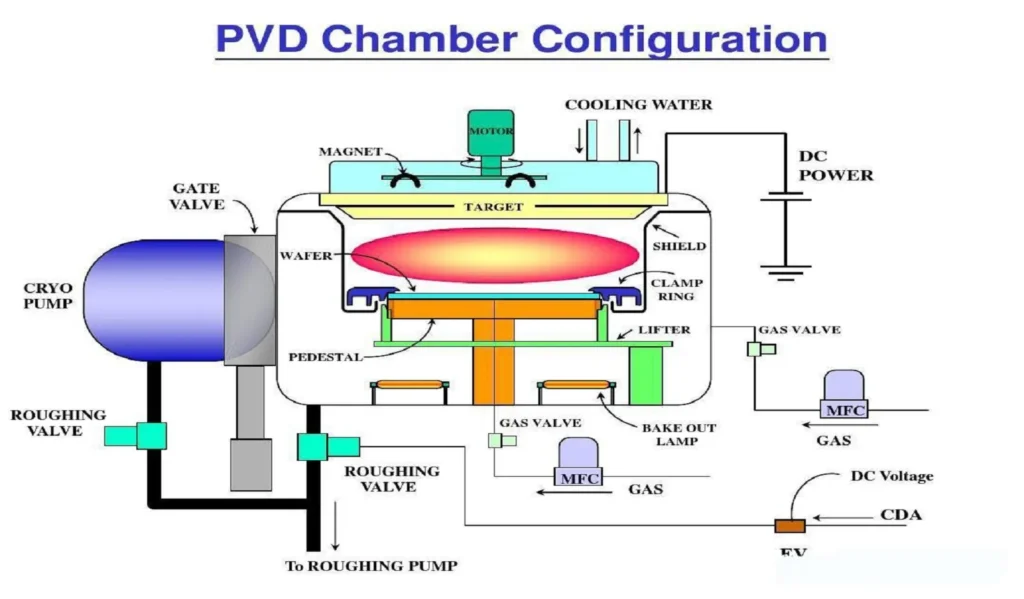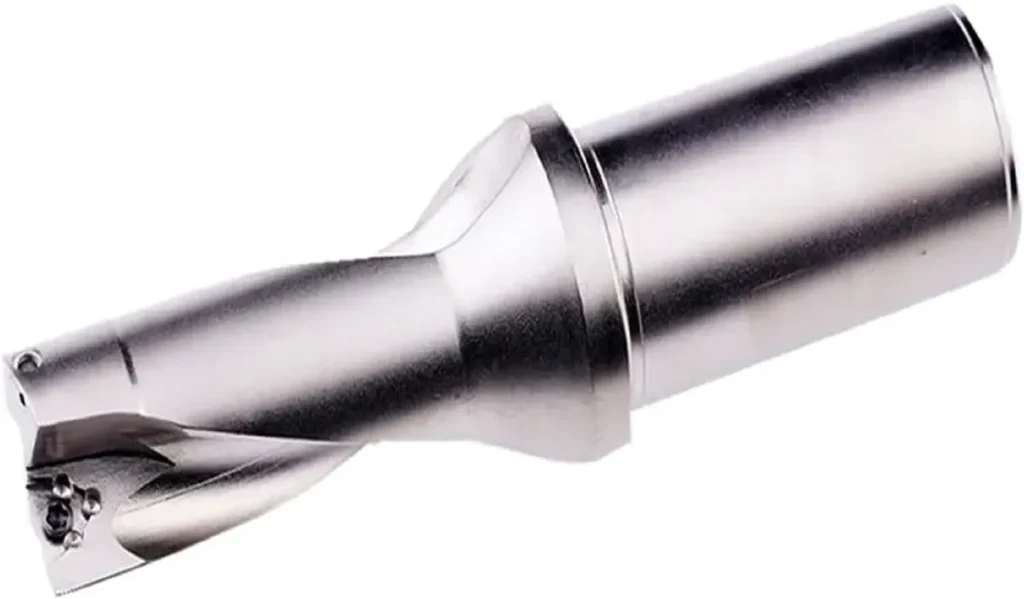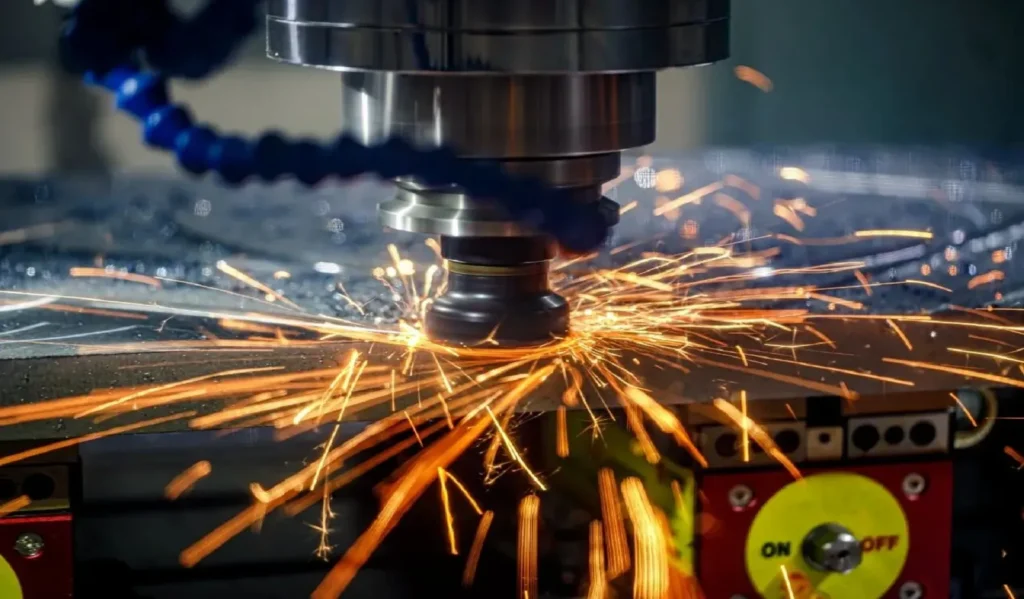Введение в вихреобразование
Вихревая обработка резьбы - это передовая, эффективная технология обработки, которая позволяет значительно повысить производительность и качество деталей. Но как она работает и каковы ее основные преимущества? В этом начальном руководстве мы рассмотрим основы вихревой обработки резьбы.
Как работает кручение нити
In вращение нити, the cutter revolves eccentrically while rotating around the central axis of the workpiece. This produces a cycloidal tool movement that ensures continuous and even cutting.
Отсутствуют прерывистые резы и радиальные усилия, характерные для обычного фрезерования. Постоянная толщина стружки и равномерный износ значительно продлевают срок службы инструмента. Вибрация и дребезг также значительно снижаются.

Преимущества по сравнению с обычным фрезерованием
- Более высокие скорости съема металла: Вихревая обработка обеспечивает очень высокую скорость подачи, в 10 раз превышающую скорость обычного фрезерования. Это приводит к огромному росту производительности.
- Улучшенная обработка поверхности: Плавное циклоидальное движение устраняет вибрацию и следы от болтанки, обеспечивая превосходное качество обработки поверхности.
- Увеличенный срок службы инструмента: Благодаря отсутствию радиальных сил и постоянной нагрузке на стружку инструменты служат значительно дольше.
- Уменьшение вибрации и дребезжания: Плавное движение предотвращает вибрацию, обеспечивая бесперебойную работу.
Применение вихревых нитей

- Медицинские имплантаты:
- Производство костных винтов и зубных имплантатов, требующих высокой точности и качества обработки поверхности.
- Аэрокосмический крепеж:
- Создание резьбы на аэрокосмических болтах и винтах, которые должны выдерживать высокие нагрузки и коррозию.
- Прецизионные свинцовые винты:
- Создание высокоточных винтов, используемых в станках, измерительных приборах и линейных приводах.
- Автомобильные компоненты:
- Производство шарико-винтовых передач и различных резьбовых автомобильных деталей, таких как карданные валы и компоненты рулевого управления.
- Гидравлические системы:
- Обработка резьбы на гидравлических поршнях и клапанах, требующих точного управления и перемещения.
- Нефтегазовая промышленность:
- Нарезание резьбы на бурильных колоннах, трубах и других компонентах, используемых при добыче и переработке нефти и газа.
- Электронные сборки:
- Производство миниатюрных и прецизионных резьб для электронных компонентов, таких как разъемы и узлы.
- Машины для литья под давлением:
- Изготовление высококачественных шнеков для систем пластификации в оборудовании для литья под давлением.
- Землеройное оборудование:
- Изготовление прочных и долговечных нитей для тяжелой техники и землеройного оборудования.
- Морское оборудование:
- Производство винтов и резьбовых деталей, устойчивых к коррозии в соленой воде.
Процесс вихревого нарезания резьбы особенно выгоден тем, что позволяет создавать сложные профили резьбы, глубокие траектории резьбы и длинные некруглые резьбы с высокой эффективностью и точностью. Он часто используется для труднообрабатываемых материалов и сложных деталей, где традиционное нарезание резьбы было бы менее эффективным или действенным.
Советы по успешному внедрению
Оптимизация скорости, нагрузки на стружку, стратегии траектории движения инструмента и жесткости станка - ключевые факторы для использования всего потенциала вихревого фрезерования. Проконсультируйтесь с поставщиком оснастки, чтобы получить рекомендации по максимизации производительности.
Какие типы фрез используются?
Требуются специальные вихревые фрезы с эксцентриковыми лопастями или вихревыми кольцами. Они крепятся к стандартным расточным линейкам или шпинделям.
Как решается проблема жесткости и вибрации?
Станок, приспособления и фреза должны обладать очень высокой жесткостью. Сбалансированная оснастка и диаметр хвостовика более 25 мм помогают гасить вибрацию.
Какую поверхность можно ожидать?
Возможна исключительно тонкая обработка до Ra 0,2 мкм. Плавное движение режущей части исключает появление следов от болтанки.
Можно ли использовать вихревое нарезание резьбы на станках с ЧПУ?
Да, станки с ЧПУ могут выполнять вихревые операции при правильном программировании и настройке фрезы. Наибольшую гибкость обеспечивают 4 или 5-осевые станки.
Неужели вихревое фрезерование предназначено только для сложных материалов?
Нет, существенное повышение производительности достигается при обработке всех алюминиевых сплавов, сталей, титана и других металлов. Это универсальное решение для обработки.
Заключение
Благодаря непрерывному режущему действию и эксцентричному движению инструмента, вращение нити может значительно повысить эффективность фрезерования. Понимание того, как правильно применять эту технологию, позволит вам увеличить скорость съема металла и повысить производственные возможности вашего цеха.




Я уже пробовал некоторые инструменты от FXS, и их долговечность оказалась на удивление хорошей. Это может помочь тем, кто работает в профессиональных мастерских или гаражах.